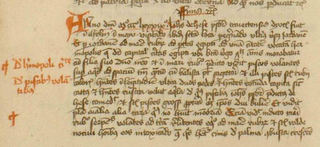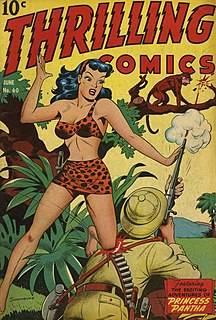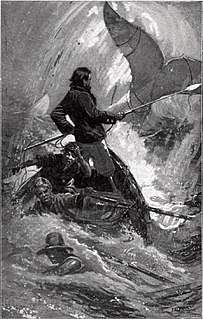 W
WAdventure fiction is a type of romance that usually presents danger, or gives the reader a sense of excitement.
 W
WThe caveman is a stock character representative of primitive humans in the Paleolithic. The popularization of the type dates to the early 20th century, when Neanderthals were influentially described as "simian" or "ape-like" by Marcellin Boule and Arthur Keith.
 W
WAn epic poem is a lengthy narrative poem, ordinarily involving a time beyond living memory in which occurred the extraordinary doings of the extraordinary people who, in dealings with the gods or other superhuman forces, gave shape to the mortal universe for their descendants, the poet and their audience, to understand themselves as a people or nation.
 W
WThe Hollow Earth is a concept proposing that the planet Earth is entirely hollow or contains a substantial interior space. Notably suggested by Edmond Halley in the late 17th century, the notion was disproved, first tentatively by Pierre Bouguer in 1740, then definitively by Charles Hutton in his Schiehallion experiment around 1774.
 W
WThe Itinerarius of Johannes Witte de Hese is a short medieval Latin travel account from around 1400. Although it purports to be a true account of the author's travels, it is a fictional account of an imaginary voyage in the same tradition as John Mandeville's Travels. The title Itinerarius comes from the first printed edition from around 1490. Johannes Witte de Hese is the name given to the author in the earliest surviving manuscript, but he is not known from any other source and the name may be an invention. He describes himself as a priest of the diocese of Utrecht who was in Jerusalem in May 1389 before setting off on his two years of travel around the world.
 W
WA jungle girl is an archetype or stock character, often used in popular fiction, of a female adventurer, superhero or even a damsel in distress living in a jungle or rainforest setting. An alternate depiction is a cave girl.
 W
WThe lost world is a subgenre of the fantasy or science fiction genres that involves the discovery of an unknown Earth civilization. It began as a subgenre of the late-Victorian adventure romance and remains popular into the 21st century.
 W
WThe Mongoliad is a fictional narrative set in the Foreworld Saga, a secret history transmedia franchise developed by the Subutai Corporation. The Mongoliad was originally released in a serialized format online, and via a series of iOS and Android apps, but was restructured and re-edited for a definitive edition released via the Amazon Publishing imprint 47North, both in print and in Kindle format. Fan-submitted Foreworld stories were published via Amazon's Kindle Worlds imprint.
 W
WNautical fiction, frequently also naval fiction, sea fiction, naval adventure fiction or maritime fiction, is a genre of literature with a setting on or near the sea, that focuses on the human relationship to the sea and sea voyages and highlights nautical culture in these environments. The settings of nautical fiction vary greatly, including merchant ships, liners, naval ships, fishing vessels, life boats, etc., along with sea ports and fishing villages. When describing nautical fiction, scholars most frequently refer to novels, novellas, and short stories, sometimes under the name of sea novels or sea stories. These works are sometimes adapted for the theatre, film and television.
 W
WThe picaresque novel is a genre of prose fiction. It depicts the adventures of a roguish, but "appealing hero", usually of low social class, who lives by his wits in a corrupt society. Picaresque novels typically adopt a realistic style. There are often some elements of comedy and satire. While the term "picaresque novel" was only coined in 1810, the picaresque novel originated in Spain during the Spanish Golden Age in 1554. Early contributors included Mateo Alemán and Francisco de Quevedo and flourished throughout Europe for more than 200 years. It continues to influence modern literature.
 W
WRobinsonade is a literary genre that takes its name from the 1719 novel Robinson Crusoe by Daniel Defoe. The success of this novel spawned so many imitations that its name was used to define a genre, which is sometimes described simply as a "desert island story" or a "castaway narrative". In a robinsonade, the protagonist is suddenly isolated from the comforts of civilization, usually shipwrecked or marooned on a secluded and uninhabited island. He must improvise the means of his survival from the limited resources at hand.
 W
WScientific romance is an archaic, mainly British term for the genre of fiction now commonly known as science fiction. The term originated in the 1850s to describe both fiction and elements of scientific writing, but it has since come to refer to the science fiction of the late nineteenth and early twentieth centuries, primarily that of Jules Verne, H. G. Wells and Arthur Conan Doyle. In recent years the term has come to be applied to science fiction written in a deliberately anachronistic style as a homage to or pastiche of the original scientific romances.
 W
WSubterranean fiction is a subgenre of adventure fiction, science fiction, or fantasy which focuses on fictional underground settings, sometimes at the center of the Earth or otherwise deep below the surface. The genre is based on, and has in turn influenced, the Hollow Earth theory. The earliest works in the genre were Enlightenment-era philosophical or allegorical works, in which the underground setting was often largely incidental. In the late 19th century, however, more pseudoscientific or proto-science-fictional motifs gained prevalence. Common themes have included a depiction of the underground world as more primitive than the surface, either culturally, technologically or biologically, or in some combination thereof. The former cases usually see the setting used as a venue for sword-and-sorcery fiction, while the latter often features cryptids or creatures extinct on the surface, such as dinosaurs or archaic humans. A less frequent theme has the underground world much more technologically advanced than the surface one, typically either as the refugium of a lost civilization, or as a secret base for space aliens.
 W
WSuperhero fiction is a genre of speculative fiction examining the adventures, personalities and ethics of costumed crime fighters known as superheroes, who often possess superhuman powers and battle similarly powered criminals known as supervillains. The genre primarily falls between hard fantasy and soft science fiction spectrum of scientific realism. It is most commonly associated with American comic books, though it has expanded into other media through adaptations and original works.
 W
WA swashbuckler is a genre of European adventure literature that focuses on a heroic protagonist stock character who is skilled in swordplay, acrobatics, guile and chivalrous ideals. A 'swashbuckler' protagonist is heroic, daring, and idealistic: he rescues damsels in distress, protects the downtrodden, and uses duels to defend his honor or that of a lady or to avenge a comrade. Swashbucklers would often engage in daring and romantic adventures with bravado or flamboyance. Swashbuckler heroes are gentleman adventurers who dress elegantly and flamboyantly in coats, waistcoats, tight breeches, large feathered hats, and high leather boots, and they are armed with the thin rapiers used by aristocrats.
 W
WThe Voyages extraordinaires is a collection or sequence of fifty-four novels by the French writer Jules Verne, originally published between 1863 and 1905.